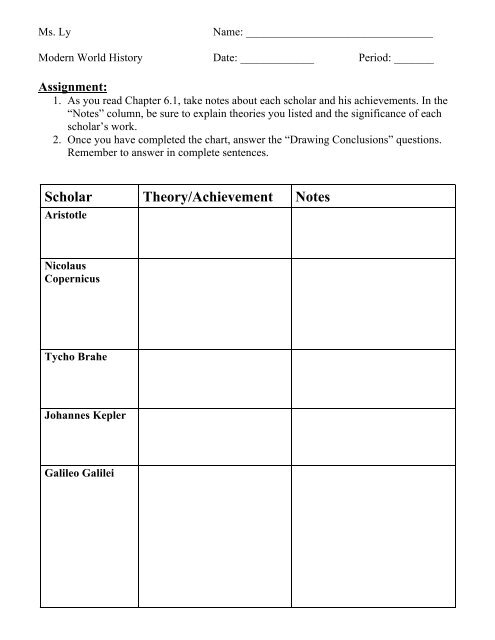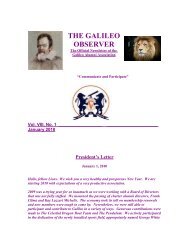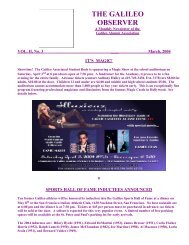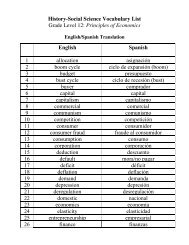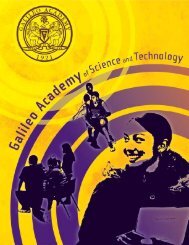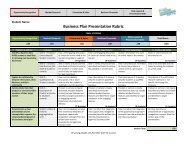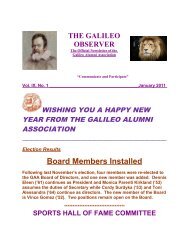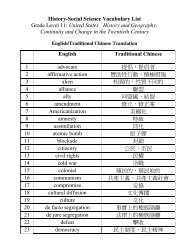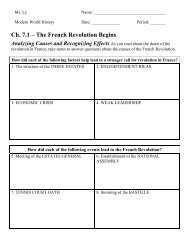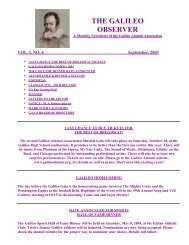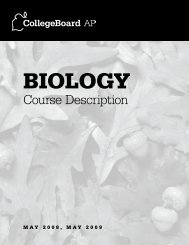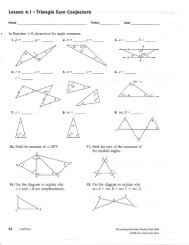Handout - Scientific Revolution
Handout - Scientific Revolution
Handout - Scientific Revolution
You also want an ePaper? Increase the reach of your titles
YUMPU automatically turns print PDFs into web optimized ePapers that Google loves.
Ms. Ly<br />
Name: _________________________________<br />
Modern World History Date: _____________ Period: _______<br />
Assignment:<br />
1. As you read Chapter 6.1, take notes about each scholar and his achievements. In the<br />
“Notes” column, be sure to explain theories you listed and the significance of each<br />
scholar’s work.<br />
2. Once you have completed the chart, answer the “Drawing Conclusions” questions.<br />
Remember to answer in complete sentences.<br />
Scholar Theory/Achievement Notes<br />
Aristotle<br />
Nicolaus<br />
Copernicus<br />
Tycho Brahe<br />
Johannes Kepler<br />
Galileo Galilei
Francis Bacon<br />
Rene Descartes<br />
Isaac Newton<br />
Zacharias Janssen<br />
Anton Van<br />
Leeuwenhoek<br />
Evangelista<br />
Torricelli<br />
Gabriel<br />
Fahrenheit
Anders Celsius<br />
Galen<br />
Andreas Vesalius<br />
Edward Jenner<br />
Robert Boyle<br />
DRAWING CONCLUSIONS<br />
1. Analyze the quote by Isaac Newton, “ If I have seen farther than others, it is because I have stood on<br />
the shoulders of giants.” What do you think he is trying to say about his accomplishments<br />
2. Based on your findings from the chart, could Newton’s statement apply to most scientific<br />
achievements Explain.<br />
3. How do these ideas about physical science related to the social world
Modern World History<br />
Chapter 6 Outline – Enlightenment and <strong>Revolution</strong>, 1550–1789, pg. 186-185<br />
Section 1: The <strong>Scientific</strong> <strong>Revolution</strong><br />
A. The Roots of Modern Science<br />
a. The Medieval View<br />
i. geocentric theory; in the Middle Ages, the earth-centered view of the<br />
universe in which scholars believed that the earth was in immovable<br />
object located at the center of the universe.<br />
b. A New Way of Thinking<br />
i. <strong>Scientific</strong> <strong>Revolution</strong>; a major change in European thought, starting in the<br />
mid-1500s, in which the study of the natural world began to be<br />
characterized by careful observation and questioning of accepted beliefs.<br />
B. A <strong>Revolution</strong>ary Model of the Universe<br />
a. The Heliocentric Theory<br />
i. heliocentric; the idea that the earth and the other planets revolve around<br />
the sun.<br />
ii. Theory; the analysis of a set of facts in their relation to one another.<br />
b. Galileo's Discoveries<br />
c. Conflict with the Church<br />
C. The <strong>Scientific</strong> Method<br />
i. scientific method; a logical procedure for gathering information about the<br />
natural world, in which experimentations and observation are used to test<br />
hypothesis.<br />
a. Bacon and Descartes<br />
D. Newton Explains the Law of Gravity<br />
E. The <strong>Scientific</strong> <strong>Revolution</strong> Spreads<br />
a. <strong>Scientific</strong> Instruments<br />
b. Medicine and the Human Body<br />
c. Discoveries in Chemistry


